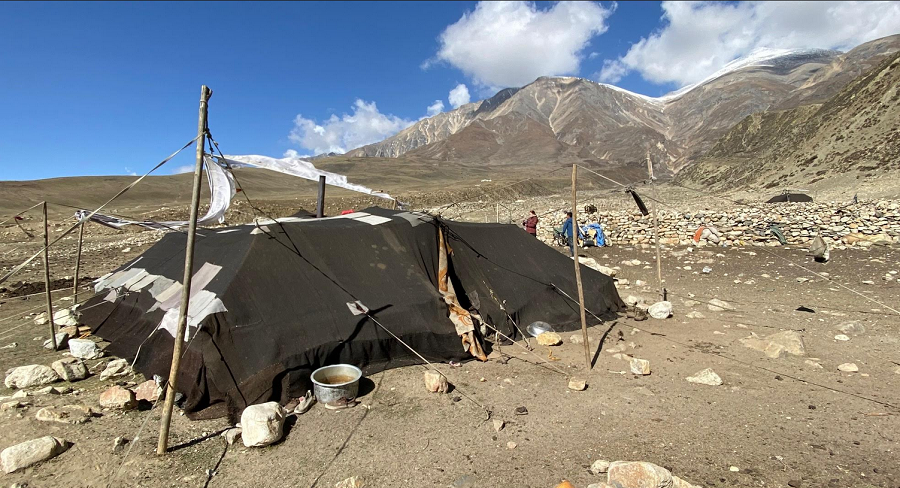Dr. Jack Wheeler
HALF-FULL REPORT 12/29/23
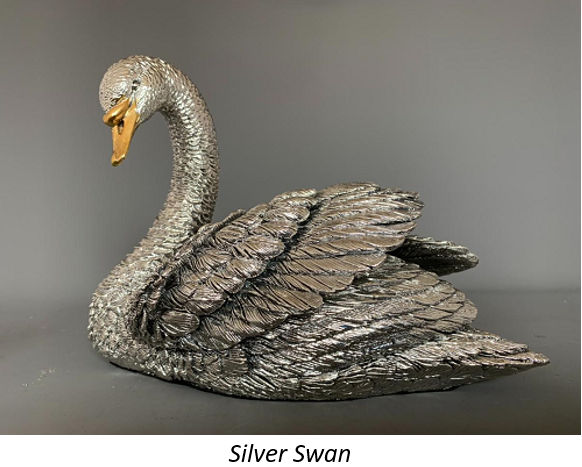 Welcome to the Happy New Year HFR! We’re going to welcome 2024 by celebrating silver swans coming our way next year, rather than worrying over what black swan catastrophes the fear-mongers want to scare us with.
Welcome to the Happy New Year HFR! We’re going to welcome 2024 by celebrating silver swans coming our way next year, rather than worrying over what black swan catastrophes the fear-mongers want to scare us with.
Not to be Pollyannish, we’ll discuss what dangers lurk ahead for there are plenty – but that’s worry-wart useless unless you couple solutions to them. For silver swan is more than a metaphor. We’re talking about remonetizing silver and even gold, what could save us all from the horrific inflation of everyday prices (like for food and household supplies) inescapable next year.
And… How about creating your own silver swans in 2024? That sure is what Rebel and I are doing. We’d like to invite you to join us on our Adventure Albania exploration on this spectacularly fascinating part of Europe in April (see what’s new on the TTP left side bar).
So here we go with a running start towards a Silver Swan 2024.
THE MATTERHORN OF THE HIMALAYAS
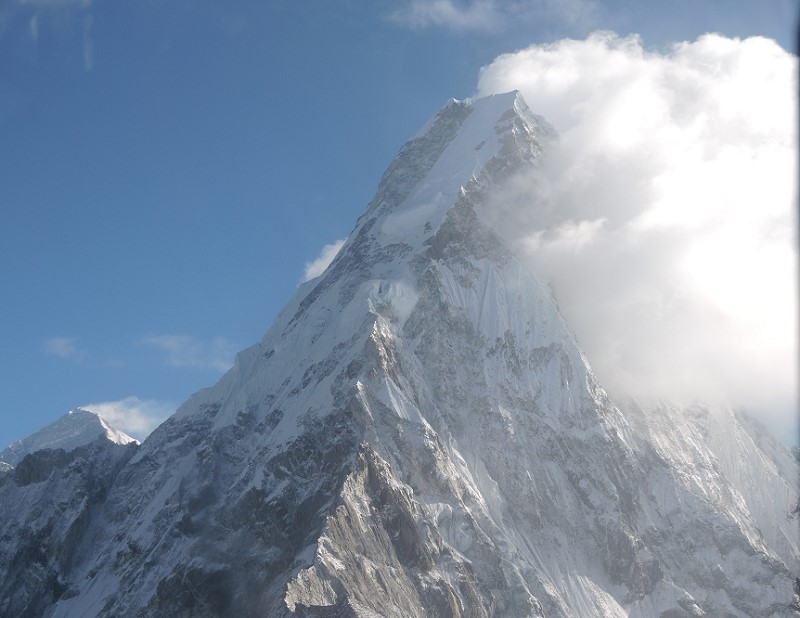 This is Ama Dablam – “Mother’s Necklace” in Sanskrit – famed by climbers and trekkers as the Matterhorn of the Himalayas. Standing 22,349 ft, the favored climbing route is the southwest ridge, which you’re looking at face on. It towers as sentinel above the Tengboche Monastery of Nyingma (Red Hat) Tibetan Buddhism, and the famous trek to Everest Base Camp (EBC).
This is Ama Dablam – “Mother’s Necklace” in Sanskrit – famed by climbers and trekkers as the Matterhorn of the Himalayas. Standing 22,349 ft, the favored climbing route is the southwest ridge, which you’re looking at face on. It towers as sentinel above the Tengboche Monastery of Nyingma (Red Hat) Tibetan Buddhism, and the famous trek to Everest Base Camp (EBC).
We were at EBC this morning, and shortly later flew by Ama Dablam in our expedition AS350B3 helicopter at 20,000 ft. It is from this altitude you can see the summit of Everest. And yes, that’s Everest on the left of the photo. In the shadow is Everest’s southwest face, in the sun the east face, the southeast ridge between them is the climber’s route to the summit. Breathtaking only begins to hint of what it is like to experience such a sight. (Glimpses of Our Breathtaking World #202 photo ©Jack Wheeler)
A CUP OF YAK BUTTER TEA IN A TIBETAN NOMAD TENT
 At 14,000 feet, Tibetan nomads called Drogpa set their summer encampment for their yak herds to graze on green pastures. You find them with difficulty in the remote Himalayan highlands of the Kingdom of Lo. They are happy to welcome you into their home, a single large tent of black yak wool, and serve you a cup of delicious yak butter tea.
At 14,000 feet, Tibetan nomads called Drogpa set their summer encampment for their yak herds to graze on green pastures. You find them with difficulty in the remote Himalayan highlands of the Kingdom of Lo. They are happy to welcome you into their home, a single large tent of black yak wool, and serve you a cup of delicious yak butter tea.
It is a rare privilege to be with these people and experience their ancient way of life. It is something we strive to do on our Himalaya Helicopter Expeditions. I took this picture in May. Here is their home from the outside. (Glimpses of Our Breathtaking World #203 photo ©Jack Wheeler)
THE CASTLE PRISON OF RICHARD THE LIONHEART
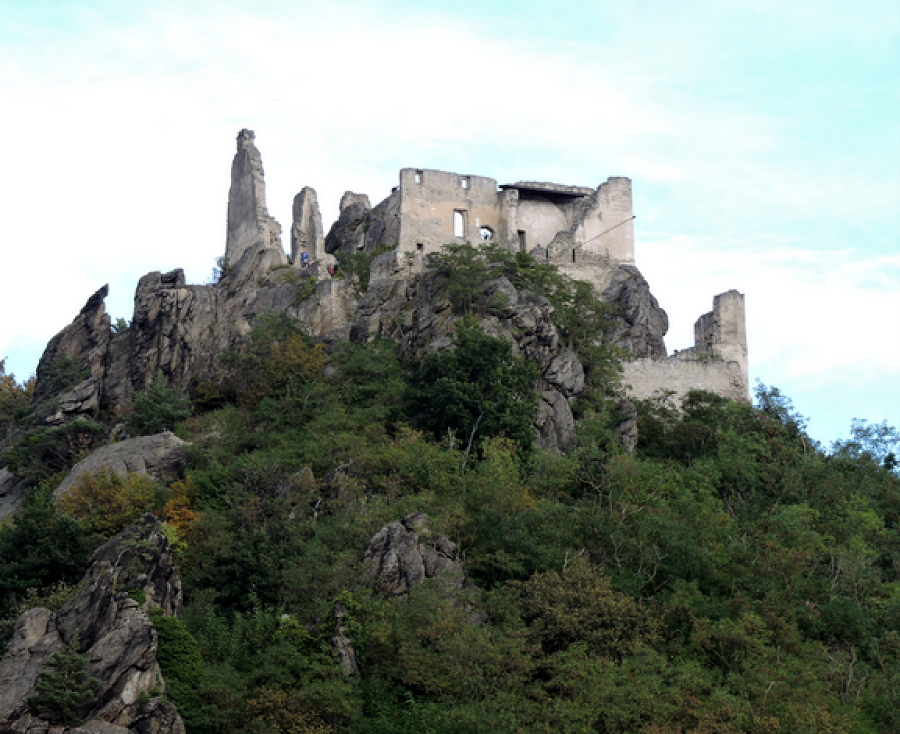 This is Durnstein Castle, perched on a precipice high above the Danube River in Austria some 60 miles upriver from Vienna. Built in the early 1100s, here is where King of England Richard the Lionheart was imprisoned, having been captured by his enemy Leopold V of Austria on his return from the Third Crusade in the Holy Land.
This is Durnstein Castle, perched on a precipice high above the Danube River in Austria some 60 miles upriver from Vienna. Built in the early 1100s, here is where King of England Richard the Lionheart was imprisoned, having been captured by his enemy Leopold V of Austria on his return from the Third Crusade in the Holy Land.
The story is well known of how Richard’s brother John had usurped the throne and impeded paying Richard’s ransom – and the legend of Robin Hood raising the money pilfering it from thieving nobles. The ransom was finally paid in 1194, with Richard returning to be crowned King of England once again. The castle fell into disrepair, uninhabitable since the late 1600s. It is an eerie journey back into history to explore it today. (Glimpses of Our Breathtaking World #197 photo ©Jack Wheeler)
THE FIRST DAY OF CHRISTMAS
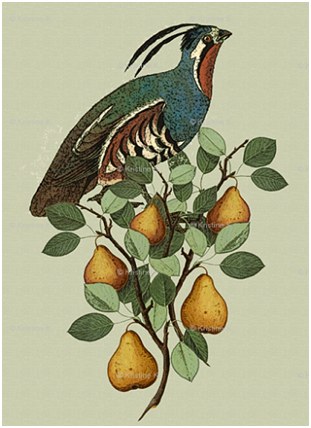 [This Monday’s Archive was originally published on Christmas Day, December 25, 2003.]
[This Monday’s Archive was originally published on Christmas Day, December 25, 2003.]
Merry Christmas! But wait… actually, tomorrow, December 26, is the First Day of Christmas.
Ancient Christians celebrated “The Holidays,” as our militant secularists insist on referring to them now, starting with the day after the birth of Jesus and ending on January 6th, the visit of the Magi in Matthew 2:11 known as the Epiphany. Start with 12/26 and end with 1/6 and you get: The Twelve Days of Christmas.
You may be really tired of hearing Christmas songs by now, including this one, yet you may still be wondering what the heck partridges in a pear tree and eight maids a-milking have to do with the birth of the founder of Christianity.
So I thought we might take a break from Serious Thoughts About World Events, and take a look at the song’s origin and meaning.
Even though The Twelve Days of Christmas was a kids’ song-game, it nonetheless had a deep religious meaning. Unlike the PC Happy Holidays of today, centuries ago Christmas was above all a religious celebration. All of the song’s twelve gifts are Christian symbols.
FLASHBACK FRIDAY – LIFE MAGAZINE DECEMBER 12, 1960
 Yes, believe it or not, this was a 4 page story in LIFE Magazine more than sixty years ago when I first swam the Hellespont. I repeated the swim twelve years later for my book, The Adventurer’s Guide. You can see the whole LIFE story here. Quite an adventure for a 16 year-old kid. (Glimpses of Our Breathtaking World #121 Photo ©Jack Wheeler)
Yes, believe it or not, this was a 4 page story in LIFE Magazine more than sixty years ago when I first swam the Hellespont. I repeated the swim twelve years later for my book, The Adventurer’s Guide. You can see the whole LIFE story here. Quite an adventure for a 16 year-old kid. (Glimpses of Our Breathtaking World #121 Photo ©Jack Wheeler)
HALF-FULL REPORT 12/22/23
 Welcome to the Christmas HFR! Sorry for the clickbait photo to start but for three reasons. First she is real, not a figment of AI. She’s Sheynnis Palacios, Miss Universe 2023, having won the crown last month. Read on and I think you’ll understand, as she may play a catalytic role in ridding her country of an evil Communist dictator.
Welcome to the Christmas HFR! Sorry for the clickbait photo to start but for three reasons. First she is real, not a figment of AI. She’s Sheynnis Palacios, Miss Universe 2023, having won the crown last month. Read on and I think you’ll understand, as she may play a catalytic role in ridding her country of an evil Communist dictator.
Now let’s turn the best and happiest news of the week: Colorado Supreme Court Votes to Remove Trump from Primary Ballot.
WHAT??? This abomination on Tuesday (12/19) is good news?? Yes, absolutely, couldn’t be better – for El Donaldo especially and the entire GOP, indeed all America in general. Let’s count the ways.
Here we go with another great HFR to engage, entice, and entertain your brain!
THE YEZIDI BLACK SNAKE SACRED SPRING
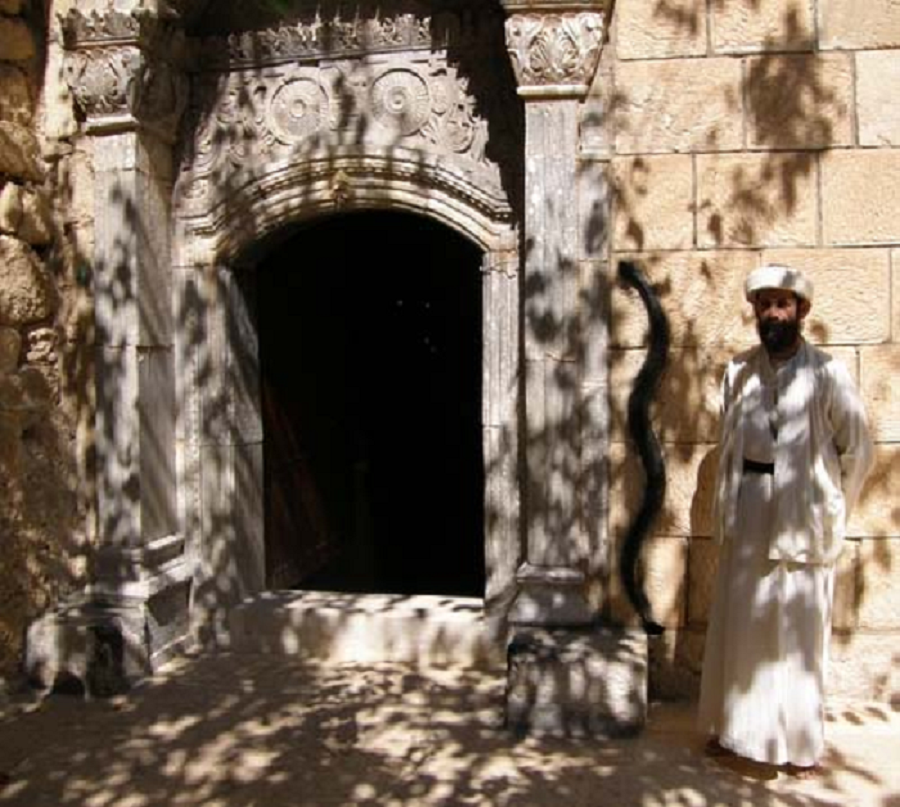 At the Temple of the Peacock Angel in the Yezidi holy city of Lalish, you find this entrance to a Sacred Spring with a carved black snake, revered by Yezidis as they believe a black snake stuck itself into a hole in Noah’s Ark and saved humanity.
At the Temple of the Peacock Angel in the Yezidi holy city of Lalish, you find this entrance to a Sacred Spring with a carved black snake, revered by Yezidis as they believe a black snake stuck itself into a hole in Noah’s Ark and saved humanity.
The Yezidis are among the most ancient of all peoples in the Middle East. Their heartland is in what is now Northern Iraq, or Iraqi Kurdistan. You may know of them through the horrific butchery perpetrated upon them by the medieval terrorists of ISIS which gained worldwide notoriety.
They are a fascinating people whose syncretic beliefs are a mélange of Zoroastrianism, Syriac Christianity, Sufi Islam spiced with their own interpretation of all three. In other words, they are their own people, no one else like them – peaceful, at ease with themselves, and immensely likeable.
Their protectors are the Kurds – an extraordinary people in their own right. We’ll be visiting Iraqi Kurdistan and the Yezidis once more soon. (Glimpses of Our Breathtaking World #89 Photo ©Jack Wheeler)
WOULD YOU BELIEVE THIS IS A CITY IN CENTRAL ASIA?
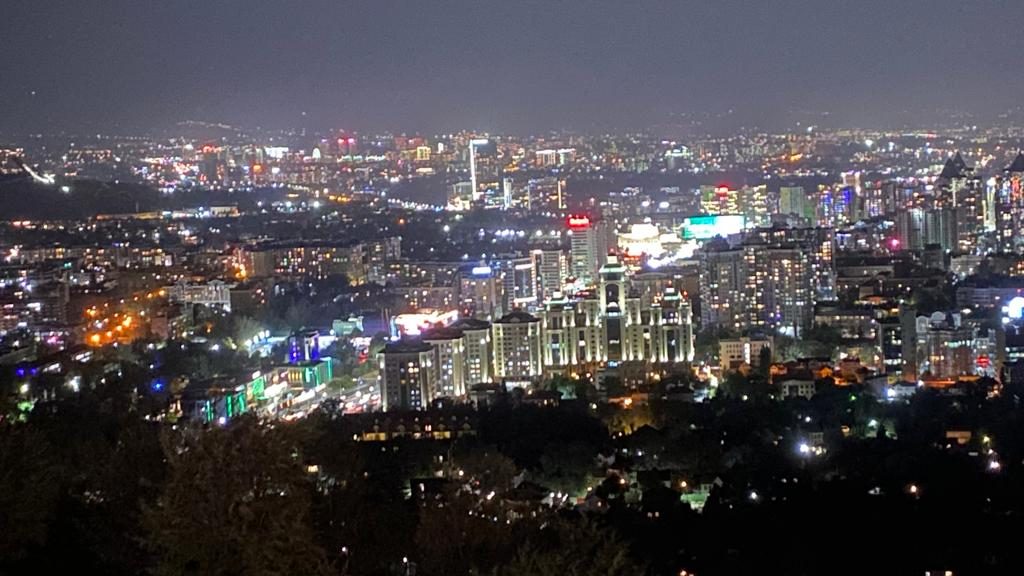 This is Almaty, the largest city in Kazakhstan with over two million people. Originally named Alma Ata or Father of Apples, as here in the western foothills of the Tien Shan mountains is where apples were first domesticated and cultivated.
This is Almaty, the largest city in Kazakhstan with over two million people. Originally named Alma Ata or Father of Apples, as here in the western foothills of the Tien Shan mountains is where apples were first domesticated and cultivated.
Almaty is a thriving prosperous city as the financial/economic- but not political- capital of independent Kazakhstan. And but a stone’s throw away from the magnificent snow-clad Tien Shan, a trekker’s paradise in the spring, summer, and fall, a skier’s in the winter. It’s a modern, spotlessly clean city with gorgeous parks and flower gardens- and there’s a terrific Irish Pub flowing with Guinness. What more could you want? (Glimpses of Our Breathtaking World #220 photo ©Jack Wheeler)
THE MOST CHRISTIAN ISLAND
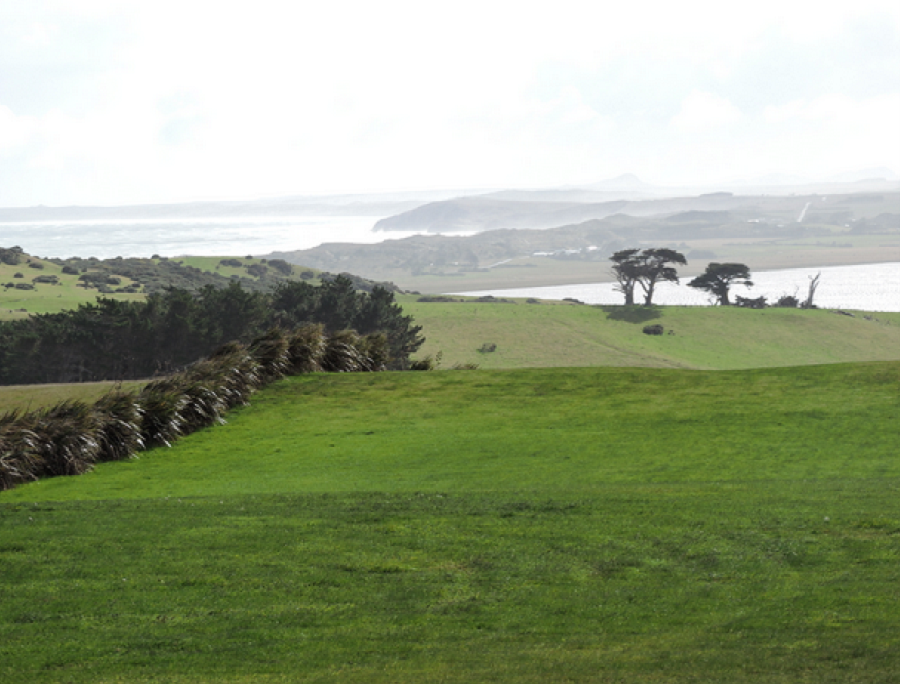 Waitangi Bay, Chatham Island. 530 miles east of New Zealand lies an isolated island of windswept rugged beauty that few people have ever heard of. Yet Chatham Island may be an ultimate Christian example of how to prevail over monstrous evil.
Waitangi Bay, Chatham Island. 530 miles east of New Zealand lies an isolated island of windswept rugged beauty that few people have ever heard of. Yet Chatham Island may be an ultimate Christian example of how to prevail over monstrous evil.
In the early 1400s, a Polynesian people calling themselves Moriori sailed from New Zealand across an unknown empty sea to reach an island they named Rekohu, meaning “misty sky.” For 400 years they lived in peace among themselves – and in utter isolation from the world.
But in 1835, another people arrived, and brought Hell with them. They were a group of 500 Maori cannibals from New Zealand determined to take Rekohu for themselves. The Maori killed them like sheep, men, women, children, and babies, and ate them.
The British Governor of New Zealand ignored the Maori Genocide. There were about 2,000 Moriori on Rekohu (renamed Chatham) when the Maoris arrived in 1835. Only 101 Moriori were still alive by 1862. It was Western Christian missionaries who put an end to Maori killing, eating, and enslaving Moriori. Today on Chatham Island there is a Moriori resurgence – but without rancor. The past is past, they say, what counts is the future. Like few other peoples on earth, the Moriori understand the Christian power of abandoning resentment and grievance.
Come to Chatham to experience a unique place in our world, and a people with their souls at peace. (Glimpses of Our Breathtaking World #176 photo ©Jack Wheeler)
WHAT TO READ 2023
 Fearnside & Holther’s Fallacy: The Counterfeit of Argument is the book that launched my interest in philosophy. I got a copy shortly after it was first published in 1959 when I was still in High School. It’s pretty beat up by now but remains in a pride-of-place in my library.
Fearnside & Holther’s Fallacy: The Counterfeit of Argument is the book that launched my interest in philosophy. I got a copy shortly after it was first published in 1959 when I was still in High School. It’s pretty beat up by now but remains in a pride-of-place in my library.
It’s still being published – last edition in 2020 – and as you can see from the Amazon reviews, continues to get high praise. I want to start this iteration of What to Read by suggesting you get a copy for any young person you know whom you value – son, grandson/daughter, cousin, child of a friend. At least by the time they’re 12 or even late grade school.
It’s critically important for anyone to learn how to reason and think properly, the earlier they learn to do so the better. More so today, obviously, with our culture and educational system awash in woketard fallaciousness. Order today and Amazon will get it to whomever you want in time for Christmas – could be the most valuable Christmas present you’ve ever given.
Before we continue, I just went over the last issue, What to Read 2021, and there are a lot of books still very relevant and worth your while. Take a look! Okay, then, let’s proceed.
THE MARBLE MOSAIC FLOOR OF SIENA CATHEDRAL
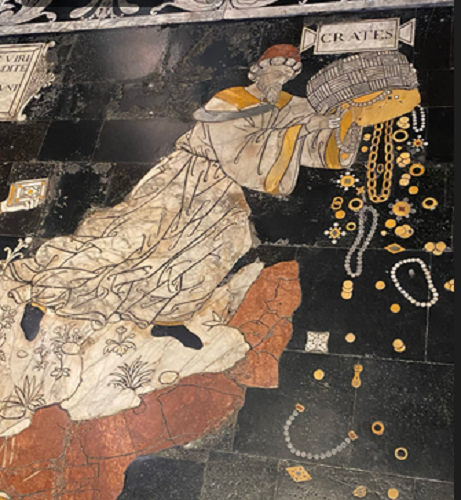 Italy’s Siena Cathedral, built from 1215 to 1263 is one of the great masterpieces of medieval architecture. It contains works of art by Renaissance greats from Donatello, Bernini, and Michelangelo. Most stunning of all, however, is the cathedral floor, entirely covered with marble mosaics depicting scenes from the Old Testament, Greek and Roman myths and history. No one photo does it justice, it’s so immense. Here you see Crates of Thebes (265-285 BC) atop the Mount of Wisdom casting riches into the sea for a life of tranquil simplicity.
Italy’s Siena Cathedral, built from 1215 to 1263 is one of the great masterpieces of medieval architecture. It contains works of art by Renaissance greats from Donatello, Bernini, and Michelangelo. Most stunning of all, however, is the cathedral floor, entirely covered with marble mosaics depicting scenes from the Old Testament, Greek and Roman myths and history. No one photo does it justice, it’s so immense. Here you see Crates of Thebes (265-285 BC) atop the Mount of Wisdom casting riches into the sea for a life of tranquil simplicity.
The floor is covered over for most of the year and is only unveiled during (plus a few days before and after) September. So plan to be there then to witness a truly magnificent artistic creation of Western Civilization. (Glimpses of Our Breathtaking World #282 photo ©Jack Wheeler)
AUTO-RACIST AMERICA
 [This Monday’s Archive was originally published on December 4, 2014. Above, we’re running the same photo as that of the Get Whitey! Article last week (12/13). That’s because it so perfectly exemplifies the cause of the Get Whitey! problem: the people holding the two signs in front are white themselves! They personify America’s greatest and most damaging racial problem: whites being racist towards themselves, what I call auto-racism. And it’s worse now than it was 9 years ago. Here’s the analysis and the cure.]
[This Monday’s Archive was originally published on December 4, 2014. Above, we’re running the same photo as that of the Get Whitey! Article last week (12/13). That’s because it so perfectly exemplifies the cause of the Get Whitey! problem: the people holding the two signs in front are white themselves! They personify America’s greatest and most damaging racial problem: whites being racist towards themselves, what I call auto-racism. And it’s worse now than it was 9 years ago. Here’s the analysis and the cure.]
TTP, December 4, 2014
The “narrative” or meme of Racist America is all that counts for the white media-academia establishment. Everything must be twisted into it or ignored.
What is clear is that the white media-academia establishment is determined to aggravate racial tension and hatred of blacks against whites in America – they want violence and riots and protests against whites.
Why? It’s too facile to simply answer, “white guilt.” For that begs the question, “What is the cause of white guilt?” Why should whites feel guilty? Guilty for what?
FLASHBACK FRIDAY – TRANS-SAHARA EXPEDITION
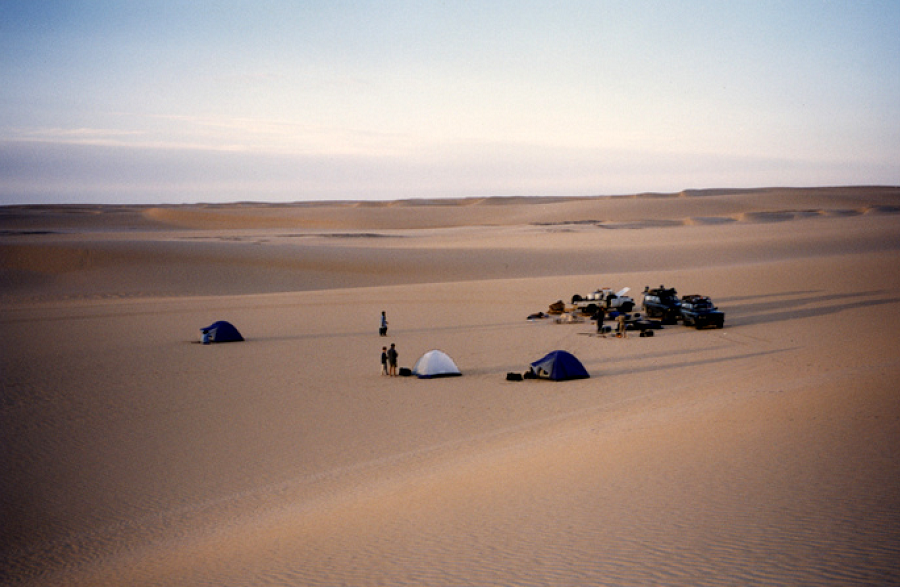 January 2003. Our campsite at dawn in the center of the Sahara called the Téneré in Niger. We found hand stone axes here 8,000 years old when the Sahara was green. Crossing the world’s greatest desert is a true expedition, one of the most astounding adventures to be had on earth, geographically, culturally, and historically. Unfortunately, it is too dangerous with lawless and ideological banditry today. I can hardly wait to do it once more when it is safe again. (Glimpses of Our Breathtaking World #70 photo ©Jack Wheeler)
January 2003. Our campsite at dawn in the center of the Sahara called the Téneré in Niger. We found hand stone axes here 8,000 years old when the Sahara was green. Crossing the world’s greatest desert is a true expedition, one of the most astounding adventures to be had on earth, geographically, culturally, and historically. Unfortunately, it is too dangerous with lawless and ideological banditry today. I can hardly wait to do it once more when it is safe again. (Glimpses of Our Breathtaking World #70 photo ©Jack Wheeler)
HALF-FULL REPORT 12/15/23
 Looks like, as Skye noted yesterday, even the ACLU is figuring this out: “Beyond Shocking”: ACLU Will Represent NRA In Free Speech Supreme Court Case.
Looks like, as Skye noted yesterday, even the ACLU is figuring this out: “Beyond Shocking”: ACLU Will Represent NRA In Free Speech Supreme Court Case.
More likely, though, is the ACLU libs are worried that DemWoke attacks on the 1st A will be used against them if the GOP gains control of both ends of Pennsylvania Avenue in 2024 – so they are being preemptive. Smart, not woketard. They may be “woke” and go back to attacking guns as Cain’s rock, but they’re not “tard”.
Moving right along… Now let’s talk about an empty room. An empty courtroom. That’s what famed constitutional lawyer Jonathan Turley surmises Special Counsel Jack Smith may be facing in his kangaroo prosecution of Donald Trump: What If Jack Smith Held A Trial And No One Came?
We’re going to have a great time in this HFR. Dive right in !
CERRO CAMPANARIO
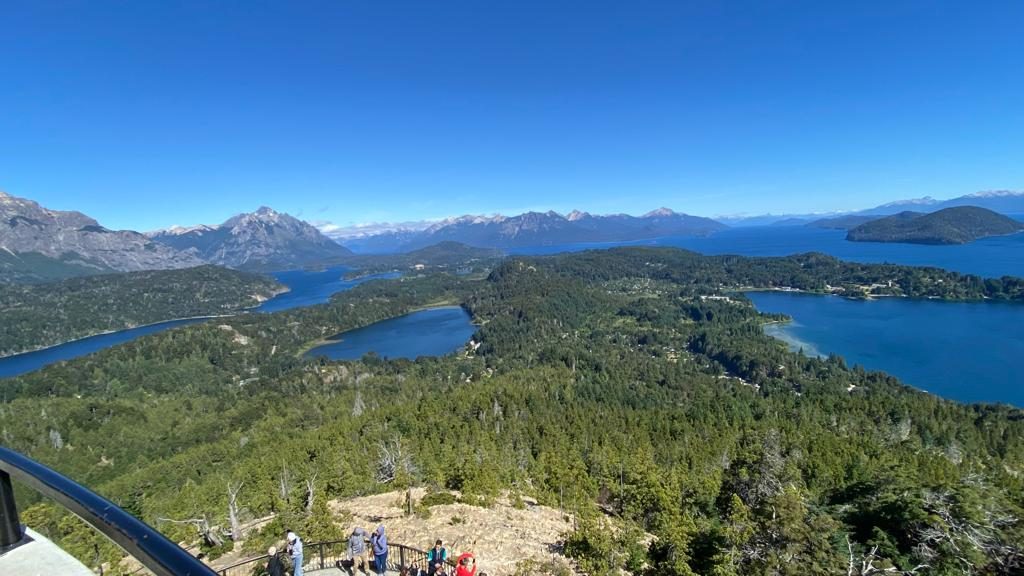 This is the view of the lakes of Bariloche in Argentine Patagonia. It was taken in January of this year from a viewpoint called Cerro Campanario. This really is one of the most beautiful places on Earth. I was here exploring Patagonia with your fellow TTPers. Hope to visit this place again sometime soon! (Glimpses of Our Breathtaking World #251 photo ©Jack Wheeler)
This is the view of the lakes of Bariloche in Argentine Patagonia. It was taken in January of this year from a viewpoint called Cerro Campanario. This really is one of the most beautiful places on Earth. I was here exploring Patagonia with your fellow TTPers. Hope to visit this place again sometime soon! (Glimpses of Our Breathtaking World #251 photo ©Jack Wheeler)
NEGOTIABLE AFFECTION IN SKAGWAY
 When gold was discovered in the Klondike of Canada’s Yukon in 1896, the fastest way to get there was a tiny hamlet at the end of a long inlet of Alaska’s Inland Passage coast called Skagway. By 1898, Skagway was a lawless Wild West boom town flooded with prospectors who needed entertainment and release from the arduous travails of gold searching – and ladies who would provide it for a price.
When gold was discovered in the Klondike of Canada’s Yukon in 1896, the fastest way to get there was a tiny hamlet at the end of a long inlet of Alaska’s Inland Passage coast called Skagway. By 1898, Skagway was a lawless Wild West boom town flooded with prospectors who needed entertainment and release from the arduous travails of gold searching – and ladies who would provide it for a price.
The Brass Pic (as in a miner’s pic & shovel) was one of many Houses of Negotiable Affection in Skagway that flourished until the gold panned out in 1900. It’s preserved as a museum today in fond memory of those days of commercially consensual delight. Skagway is a terrific place to experience, drawing over a million visitors a year. Come here to see what draws them. (Glimpses of Our Breathtaking World #198 photo ©Jack Wheeler)
HEAVEN IN THE CARIBBEAN
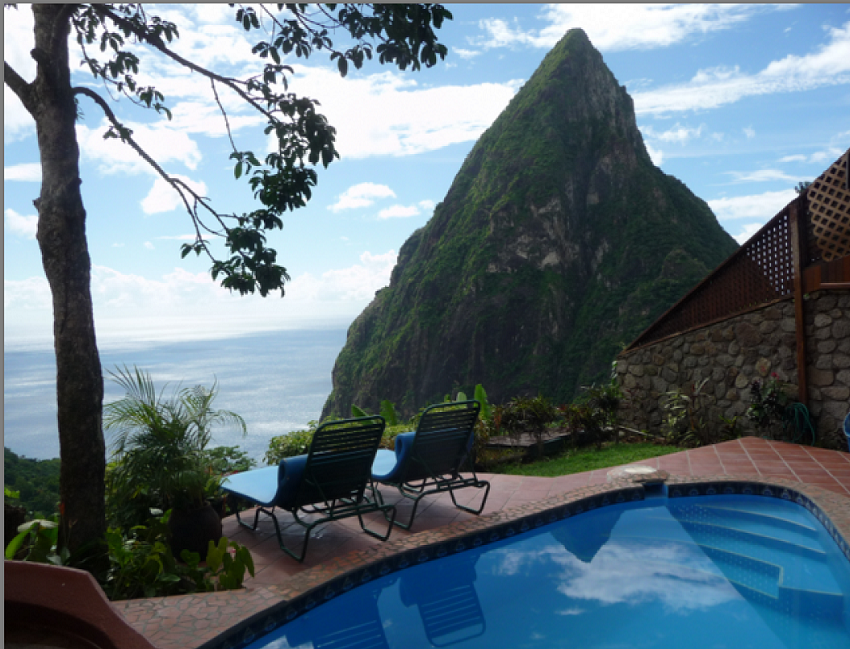 Quick – name the only country in the world named after a woman. It’s the island nation in the Caribbean of St. Lucia, named after the patron saint of virgins, 4th century Saint Lucia.
Quick – name the only country in the world named after a woman. It’s the island nation in the Caribbean of St. Lucia, named after the patron saint of virgins, 4th century Saint Lucia.
The charm, beauty, and serenity of St. Lucia are unequaled in the Caribbean. Here you can have your own private retreat overlooking the twin peaks of The Pitons. The St. Lucian people take great pride in the immaculate spotlessness of their island and in their matchless reputation for personal warmth and hospitality.
While an English-speaking country and member of the British Commonwealth, there is a French tradition here as well, reflected in the fine cuisine and wines in restaurants. Yet I became fond of the local Piton beer as well. St. Lucia is the easiest island in the Caribbean to fall in love with – so it is no wonder that couples come from all over the world to get married or honeymoon here.
If you want to spend a few days of bliss away from all the cares of the world, you can’t do better than this place of heaven in the Caribbean. (Glimpses of Our Breathtaking World #190 photo ©Jack Wheeler)
TRULLI
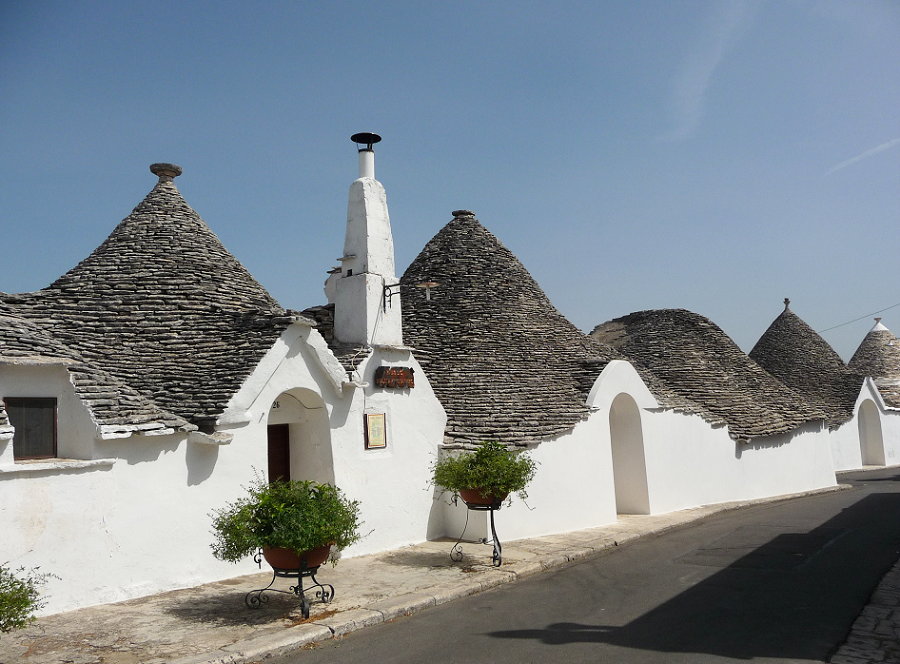 At the top of Italy’s boot heel, there’s an ancient village named Alberobello that’s become a World Heritage Site.
At the top of Italy’s boot heel, there’s an ancient village named Alberobello that’s become a World Heritage Site.
This is because the villagers have preserved a prehistoric building technique with the conical roofs of their homes built up of corbelled limestone slabs with no mortar. The homes are collectively called trulli (true-lee) as each home individually is a called a trullo (true-low). Some trulli are centuries old albeit regularly rebuilt in the traditional way and maintained immaculately.
It’s a fascinating look into unique millennia-old living. Yet it is only one example of this little-visited part of far southern Italy that’s worth exploring. There’s so much more to Italy than Rome, Florence, Venice and such tourist magnets, as worthwhile visiting them may be. You’ll learn that very quickly when you start exploring Italy’s remoter regions.
(Glimpses of Our Breathtaking World #255 photo ©Jack Wheeler)
THE EVOLUTIONARY ARGUMENT AGAINST THE INCOME TAX
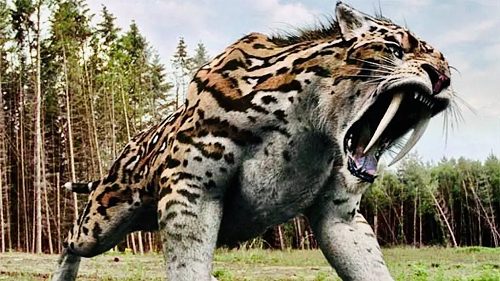 [This Monday’s Archive was originally published on November 10, 2004. It still applies to today even more so. Perhaps Trump or RDS could start promoting it, for the current version via FairTax.org recognizes it won’t work with the repeal of the 16th Amendment.]
[This Monday’s Archive was originally published on November 10, 2004. It still applies to today even more so. Perhaps Trump or RDS could start promoting it, for the current version via FairTax.org recognizes it won’t work with the repeal of the 16th Amendment.]
TTP, November 10, 2004
A number of people in Congress have suddenly become very interested in an obscure scholarly article in the October 1, 2004 issue of Science magazine, America’s premier scientific journal. Written by UCLA paleobiologist Blaire Van Valenburgh and her colleagues, it’s entitled “Cope’s Rule, Hypercarnivory, and Extinction in North American Canids”.
What knocked off all the “megafauna” that flourished since yet exist no longer? Giant ground sloths, woolly mammoths, cave bears, saber-toothed tigers, giant Irish elks, dire wolves, and bone-crushing dogs?
Well, the larger a carnivore becomes, the more dependent it is on very large prey. You can see how this applies to the entire tax structure of the federal government. The US Government is a hypercarnivore, dependent upon the tiniest fraction of its subjects for tax-food.
FLASHBACK FRIDAY – CLIMBING THE GREAT PYRAMID
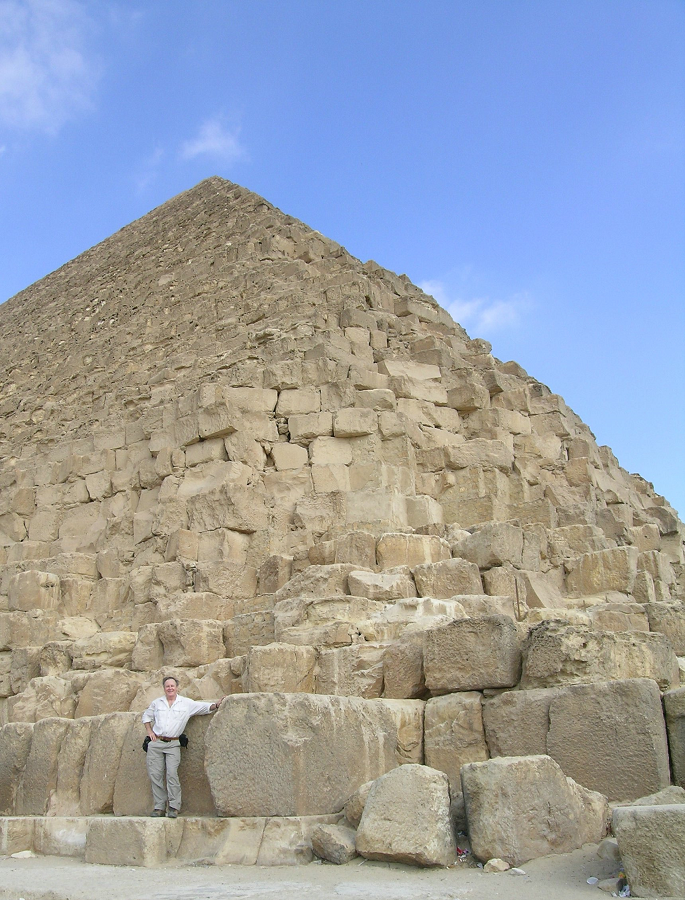 Fifty two years ago – August 1971 – I was able to climb the Great Pyramid of Cheops all the way to the top. 450 feet high, 4,000 years old, the only one of the original Seven Wonders of the World to still exist, it was my first time in Egypt and I had to give it a go.
Fifty two years ago – August 1971 – I was able to climb the Great Pyramid of Cheops all the way to the top. 450 feet high, 4,000 years old, the only one of the original Seven Wonders of the World to still exist, it was my first time in Egypt and I had to give it a go.
Of course, this is illegal. So I waited near sunset and all the tourists had gone, walked around to the northwest corner hidden from most views where there was one lonely guard. I gave him 20 Egyptian pounds which made him very happy, and up I went. Each block at the bottom is about five feet tall and gets smaller as you climb, with over 200 stone layers or “courses” base to apex. The top is flat, about 10-foot square – the limestone casing reaching a point gone long ago.
I was a philosophy doctoral student back then, so I sat down, took out from my daypack Aristotle’s Nicomachean Ethics, and read my idol’s wisdom in the light of the setting sun. It was a sunset I’ll never forget, too mesmerized by the moment to take a picture. The photo is of me taken recently where I began my climb of decades ago. (Glimpses of Our Breathtaking World #126 Photo ©Jack Wheeler)
HALF-FULL REPORT 12/08/23
Congresswoman Elise Stefanik (R-NY) has to be the HFR Hero of the Week for straight nuking the woketard presidents of MIT, Harvard, and Penn Universities: “All three of you should resign!”
And how beautiful is this? NY Post this morning (12/08):
Get ready for the best HFR I have ever written. That’s what I’m thinking now. You decide. Let’s roll…
THE DANCING FOREST ON THE CURONIAN SPIT
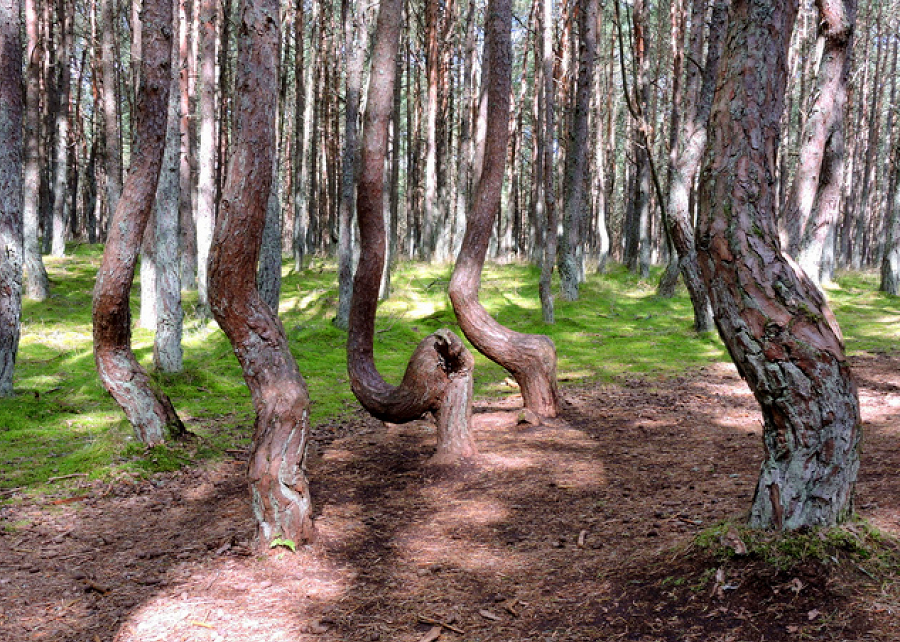 The Curonian Spit is a 60 mile-long and skinny stretch of sand separating the 625 square-mile Curonian Lagoon from the Baltic Sea. It is jointly shared by Lithuania and Kaliningrad. The trees of one section of the pine forests covering the spit are weirdly twisted and distorted by some unknown force of nature. Their bizarre undulations have earned it the sobriquet, “The Dancing Forest.” It’s one of the as-yet unexplained mysteries of life on our planet, and a wondrous one to see. (Glimpses of Our Breathtaking World #200 photo ©Jack Wheeler)
The Curonian Spit is a 60 mile-long and skinny stretch of sand separating the 625 square-mile Curonian Lagoon from the Baltic Sea. It is jointly shared by Lithuania and Kaliningrad. The trees of one section of the pine forests covering the spit are weirdly twisted and distorted by some unknown force of nature. Their bizarre undulations have earned it the sobriquet, “The Dancing Forest.” It’s one of the as-yet unexplained mysteries of life on our planet, and a wondrous one to see. (Glimpses of Our Breathtaking World #200 photo ©Jack Wheeler)
A CHANGPA NOMAD GIRL ON THE TIBETAN PLATEAU
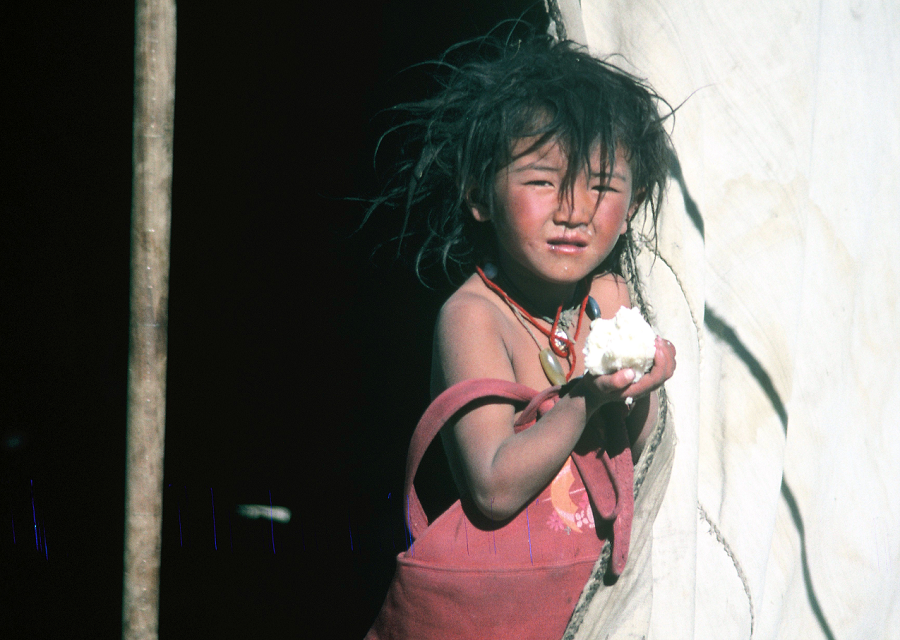 “Changpa” means “northerners” in Tibetan, the nomads who survive with their herds of goats and yaks in the 15,000-foot high plateau of northern Tibet known as the Changtang.
“Changpa” means “northerners” in Tibetan, the nomads who survive with their herds of goats and yaks in the 15,000-foot high plateau of northern Tibet known as the Changtang.
In 1987, I conducted an overland expedition from Beijing to Kathmandu, crossing the entire Changtang north to south. TTP’s Dr. Joel Wade was with me. Occasionally, we’d chance upon a Changpa encampment. For many of them such as this young girl holding a handful of barley meal, we were the first white people they had ever seen.
The Changpa live in one of the most remote and harshest places on earth. We can hardly imagine what life is like for them any more can they imagine ours. Being with them is an unforgettably profound experience. (Glimpses of Our Breathtaking World #254 photo ©Jack Wheeler)
COURTSHIP IN THE GALAPAGOS
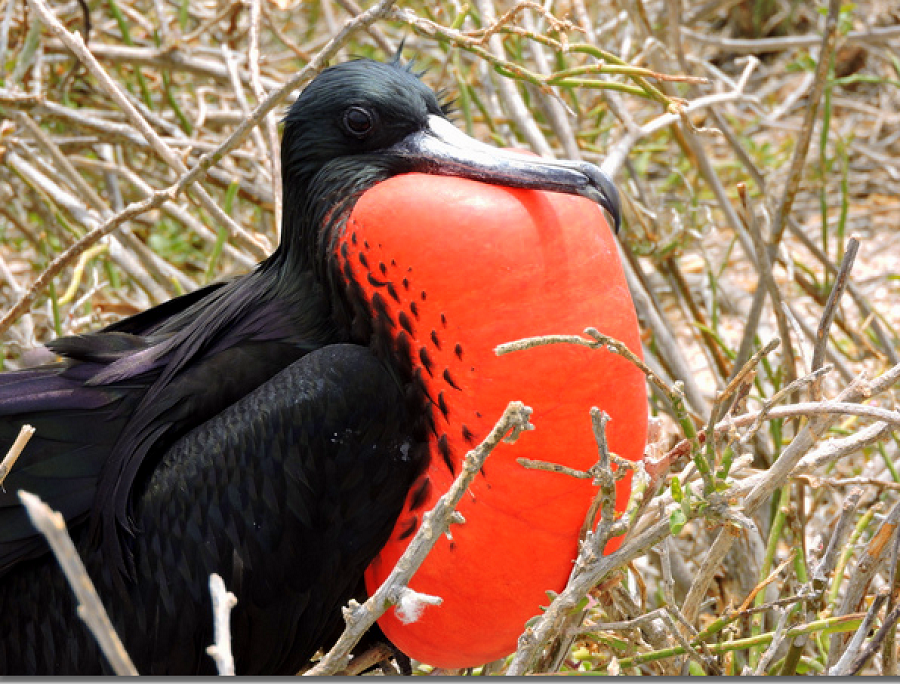 The male Magnificent Frigatebird has a flap of loose bright red skin on his neck called a “gular sac.” During mating season, they huff and puff, filling it with air to blow it up like a balloon. They then parade around showing off for the ladies, for the bigger the red balloon, the more the ladies are aroused. Size matters, even in the Galapagos.
The male Magnificent Frigatebird has a flap of loose bright red skin on his neck called a “gular sac.” During mating season, they huff and puff, filling it with air to blow it up like a balloon. They then parade around showing off for the ladies, for the bigger the red balloon, the more the ladies are aroused. Size matters, even in the Galapagos.
This is only one of many courtship displays among the birds and animals of these extraordinary islands. No wonder the Galapagos are called “evolution’s laboratory.” (Glimpses of Our Breathtaking World #199 photo ©Jack Wheeler)
THE PILLARS OF HERCULES
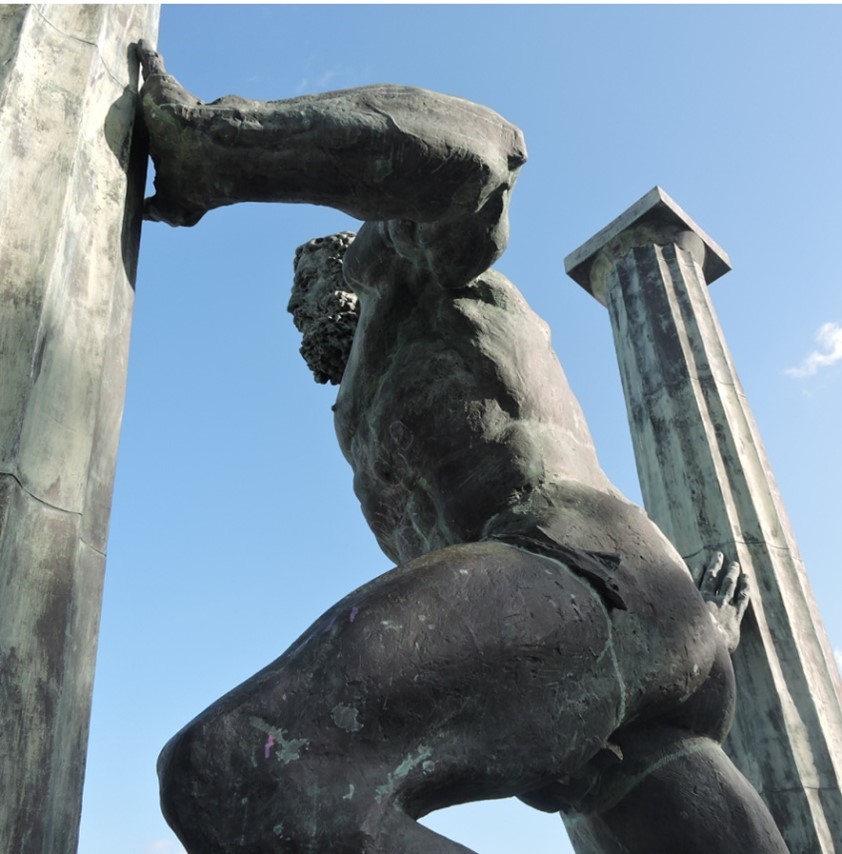 On either side of the entrance to the Strait of Gibraltar there are two small mountains known since great antiquity as the Pillars of Hercules. The pillar on the northern, European side is the famous Rock of Gibraltar. That on the southern, African side is Mount Abyla, Phoenician for “lofty mountain.”
On either side of the entrance to the Strait of Gibraltar there are two small mountains known since great antiquity as the Pillars of Hercules. The pillar on the northern, European side is the famous Rock of Gibraltar. That on the southern, African side is Mount Abyla, Phoenician for “lofty mountain.”
The legend for the Phoenicians, Greeks, and Romans was that Hercules pushed the two pillars apart to join the Mediterranean with the Atlantic. We think today of Hercules as a comic-book bodybuilder, while the truth is opposite. The entire ancient Mediterranean world very seriously worshipped him. For the Phoenicians, he was Melqart, King of the Earth. For the Greeks, he was Heracles, Divine Protector of Mankind. He was the same for the Romans, who pronounced his name as Hercules.
The Phoenician trading port of Abyla has a history of 3,000 years, from Phoenician to Carthaginian to Roman to Byzantine to Christian Visigoths to Islamic Berbers to Portuguese – and since 1668 to Spain, which continues to govern it today as the Spanish Autonomous City of Ceuta on the Mediterranean coast of Morocco.
Ceuta is a charming European city with beautiful beaches, open air cafés with great sangria, very relaxed and pleasant. It is here you find the statue of Hercules separating his Pillars commemorating the legend pictured above. Easy to get to with high-speed ferries from Algeciras near Gibraltar, Ceuta is definitely worth your while to experience. (Glimpses of Our Breathtaking World #137 Photo ©Jack Wheeler)
THE DEATH OF PALESTINIANISM
 [This Monday’s Archive was originally published on October 28, 2004. It predicted that Yasser Arafat “will soon be dead, the sooner the better.” Quicker than I imagined, he dies two weeks later on November 11. Alas, Palestinian Arabs still suffer the catastrophic consequences of his demonic depravity. Thus the relevance of this article and the basic lesson it has for Palestinian Arabs holds true today.]
[This Monday’s Archive was originally published on October 28, 2004. It predicted that Yasser Arafat “will soon be dead, the sooner the better.” Quicker than I imagined, he dies two weeks later on November 11. Alas, Palestinian Arabs still suffer the catastrophic consequences of his demonic depravity. Thus the relevance of this article and the basic lesson it has for Palestinian Arabs holds true today.]
The Jewish Talmud makes the following observation:
“There is no beauty like Jerusalem, no wealth like Rome, no depravity like Arabia.”
This was written in the 3rd Century AD – three hundred years before the Arabs embraced Mohammed’s Islam. But neither the adoption of Islam nor all the intervening centuries since has decreased the addiction Arab men have to pederasty.Arab pederasty was personified in Yasser Arafat, one of the vilest human beings to ever infest the earth.
Far worse than his pedophilic predilections, however, was Arafat’s Arab Naziism. Yasser Arafat was the Hitler of Palestinian Arabs. Just as Hitler led the German people in a euphoric frenzy to their doom, so Arafat has done the same to his people. On his deathbed next to him lies the Myth of Palestinianism.
FLASHBACK FRIDAY – JOHNNY AND THE TSANTSA
 November 17, 1976. When I wrote my book “The Adventurer’s Guide,” it was a fantasy of mine to go on the Tonight Show and have Johnny Carson hold a “tsantsa,” a human shrunken head – as a book chapter was “How To Live With Headhunters.” As you can see, that fantasy came true. I still can’t believe how relaxed I was in the studio photo. That’s because Carson had a magical ability to put a guest like me, no professional performer, at ease. The cameras and lights, the audience, millions watching on TV all went away. It was just me talking to this friendly fellow with no one around. An amazing experience. Some dreams can really happen! (Glimpses of Our Breathtaking World #40 photo ©Jack Wheeler)
November 17, 1976. When I wrote my book “The Adventurer’s Guide,” it was a fantasy of mine to go on the Tonight Show and have Johnny Carson hold a “tsantsa,” a human shrunken head – as a book chapter was “How To Live With Headhunters.” As you can see, that fantasy came true. I still can’t believe how relaxed I was in the studio photo. That’s because Carson had a magical ability to put a guest like me, no professional performer, at ease. The cameras and lights, the audience, millions watching on TV all went away. It was just me talking to this friendly fellow with no one around. An amazing experience. Some dreams can really happen! (Glimpses of Our Breathtaking World #40 photo ©Jack Wheeler)
HALF-FULL REPORT 12/01/23
 This Babylon Bee spoof is so close to the truth you don’t whether to laugh or cringe. It’s exactly why, as Skye pointed out yesterday, the Irish are finally rebelling against their woke girlieman PM doing next to nothing about the flood of immigrants running amok in their country.
This Babylon Bee spoof is so close to the truth you don’t whether to laugh or cringe. It’s exactly why, as Skye pointed out yesterday, the Irish are finally rebelling against their woke girlieman PM doing next to nothing about the flood of immigrants running amok in their country.
And as he links to, the same thing is forcing governments in Sweden, Holland, Germany and the UK to take drastic action. So the question obviously is now, when will the American people rebel for real against the open borders insanity ruining America? And the crushing of our 1st Amendment by the Dem fascisti?
Okay, off we go with another great HFR, lots to learn, lots to laugh and enjoy – and to find out why dreaded AI can’t do simple math better than a fourth-grader. All aboard!
AMONG A MILLION PENGUINS IN SOUTH GEORGIA
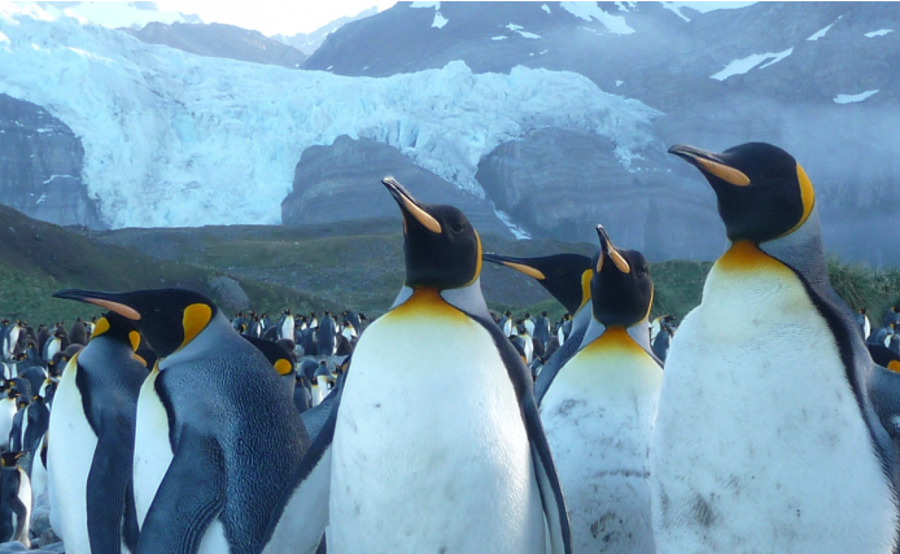 The Antarctic island of South Georgia is home to a million King penguins, plus countless fur seals, gigantic elephant seals, staggering numbers of seabirds such as albatrosses, amidst a backdrop of towering mountains with massive glaciers spilling off them.
The Antarctic island of South Georgia is home to a million King penguins, plus countless fur seals, gigantic elephant seals, staggering numbers of seabirds such as albatrosses, amidst a backdrop of towering mountains with massive glaciers spilling off them.
Nothing can prepare you for the incomprehensible size of the penguin rookeries here, densely packed as far as the eye can see (all those white dots on the hills behind are penguins). Nor for the size of bull elephant seals weighing up to 8,000 pounds, especially when they rise up and crash their chests against each other in mating challenges emitting deafening bellows. Nor being surrounded by a thousand fur seals unafraid of you. The density of wildlife combined with the magnificent beauty of the island is completely overwhelming.
Here also is the abandoned whaling station of Grytviken where the heroic explorer Ernest Shackleton is buried. You can only get here by expedition cruise ship. South Georgia is one of the great experiences on our planet. (Glimpses of Our Breathtaking World #96 photo ©Jack Wheeler)
MAURITANIA FISH MARKET
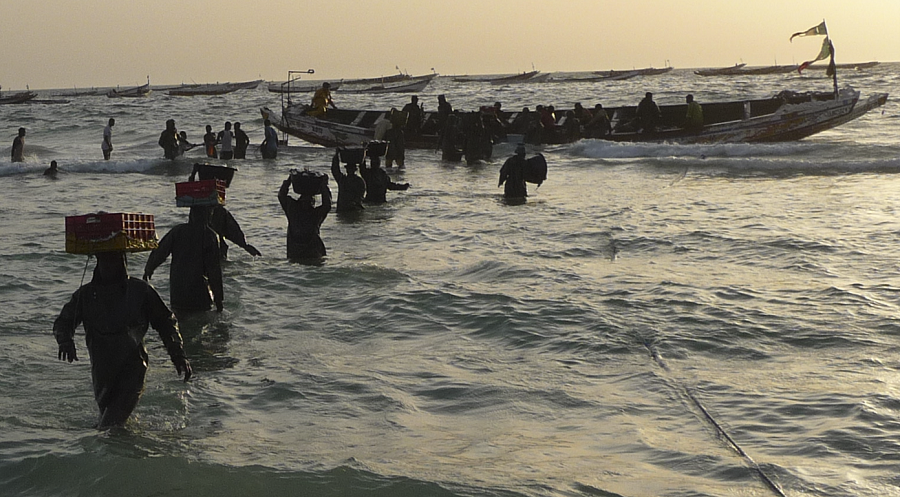 Go down to the Atlantic coast beach of Mauritania’s capital Nouakchott at sunset, and you’ll see a very unusual fish market. A fishing boat laden with the day’s catch is ready to come ashore, but the crew is afraid the wind and surf may capsize the boat as they do, losing their catch in the process.
Go down to the Atlantic coast beach of Mauritania’s capital Nouakchott at sunset, and you’ll see a very unusual fish market. A fishing boat laden with the day’s catch is ready to come ashore, but the crew is afraid the wind and surf may capsize the boat as they do, losing their catch in the process.
So they float just outside the surf line so buyers with boxes and baskets can wade out to buy the fish right off the boat, and wade back. Only when the boat is empty will the crew attempt to beach it. Just one of this West African country’s intriguing sights.
.(Glimpses of Our Breathtaking World #249 photo ©Jack Wheeler)
LETHAL BEAUTY
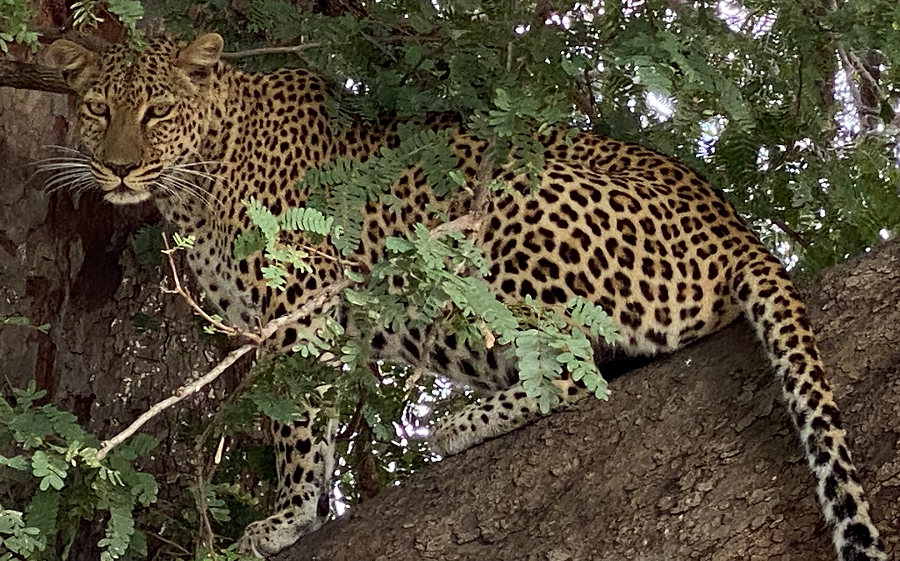 Want to get this close to a leopard – and safely? Come with me on a safari in Africa and I’ll show you how. Yes, she’s lethal – to the animals she hunts, not you. Yes, you can make such lethal beauty an indelible part of your life.
Want to get this close to a leopard – and safely? Come with me on a safari in Africa and I’ll show you how. Yes, she’s lethal – to the animals she hunts, not you. Yes, you can make such lethal beauty an indelible part of your life.
We really do only live once on this Earth. You really do owe it to yourself to make the most of it. You really can’t take it with you. It really is time to live your dream, to fill your soul with life-memorable experiences. Life lasts but a snap of the finger.
So what adventures have you always dreamed of? Let me know and maybe you and I can make them become real together. I’m only an email away: [email protected]. (Glimpses of Our Breathtaking World #204 photo ©Jack Wheeler)
THE EMPRESS WHO LOVED ACHILLES
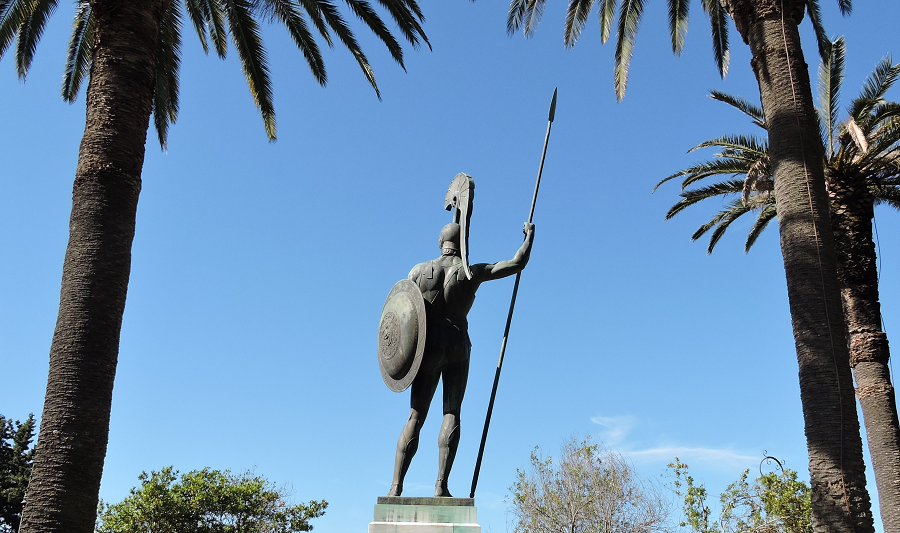 On a mountain top on the island of Corfu in 1890, Empress Elizabeth of Austria built a magnificent marble palace called the Achilleion, dedicated to her hero, the legendary Achilles of Homer’s Iliad. Here she retreated from the world, amidst the palace’s gorgeous gardens overlooking the Mediterranean abundant with larger-than-life statues of her ideal man, “who despised all mortals and did not fear even the gods."
On a mountain top on the island of Corfu in 1890, Empress Elizabeth of Austria built a magnificent marble palace called the Achilleion, dedicated to her hero, the legendary Achilles of Homer’s Iliad. Here she retreated from the world, amidst the palace’s gorgeous gardens overlooking the Mediterranean abundant with larger-than-life statues of her ideal man, “who despised all mortals and did not fear even the gods."
All of Europe knew her as Sisi. Adored by her husband Emperor Franz Joseph I, renowned as the most beautiful – and most beloved -- woman of her time, she was Austria’s Empress for 44 years. Her life ended tragically, murdered at random by an anarchist who wanted to “kill a royal.”
The Achilleion today is maintained immaculately in all its original glory as a museum you can visit. Don’t pass the chance to see it for yourself. (Glimpses of Our Breathtaking World #76 photo ©Jack Wheeler)
EAST OF THE DEAD SEA
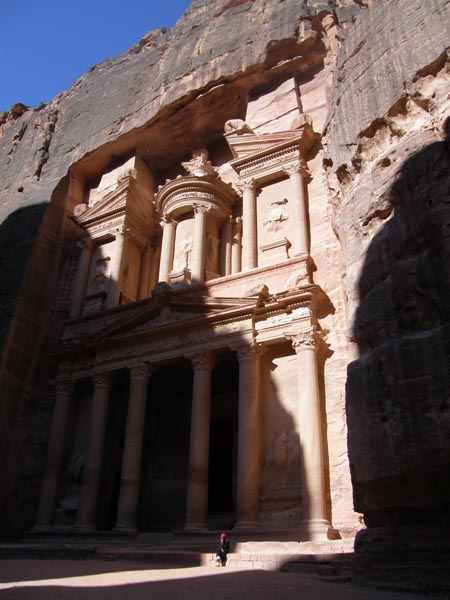 [This Monday’s Archive was originally published on July 3, 2008. This history of Jordan is particularly apropos because of Saturday’s (11/25) worldwide news: Dutch Right-Wing Election Winner Geert Wilders Causes Uproar After Declaring ‘Jordan Is Palestine!’ Arab Countries Freak. Of course it is, Wilders is right as you can see history proves below, but Jordan already has a massive refugee influx of 2 million from Iraq and Syria. There are 3 million Palestinian Arabs in Israel’s so-called West Bank and 2 million in Gaza. With a population of 11.5 million already crammed into a mostly barren desert country smaller than Indiana, how could Jordan handle 5 million more? That noted, enjoy the history – and the photos!]
[This Monday’s Archive was originally published on July 3, 2008. This history of Jordan is particularly apropos because of Saturday’s (11/25) worldwide news: Dutch Right-Wing Election Winner Geert Wilders Causes Uproar After Declaring ‘Jordan Is Palestine!’ Arab Countries Freak. Of course it is, Wilders is right as you can see history proves below, but Jordan already has a massive refugee influx of 2 million from Iraq and Syria. There are 3 million Palestinian Arabs in Israel’s so-called West Bank and 2 million in Gaza. With a population of 11.5 million already crammed into a mostly barren desert country smaller than Indiana, how could Jordan handle 5 million more? That noted, enjoy the history – and the photos!]
TTP July 3, 2008
The 2,000 year-old Rose Red City of Petra was the religious center of an ancient desert people named Nabataeans. They didn’t build huge temples such as this – they carved them out of cliffs of rose-red sandstone in their hidden mountain sanctuary east of the Dead Sea.
FLASHBACK FRIDAY: THE TURFAN OASIS
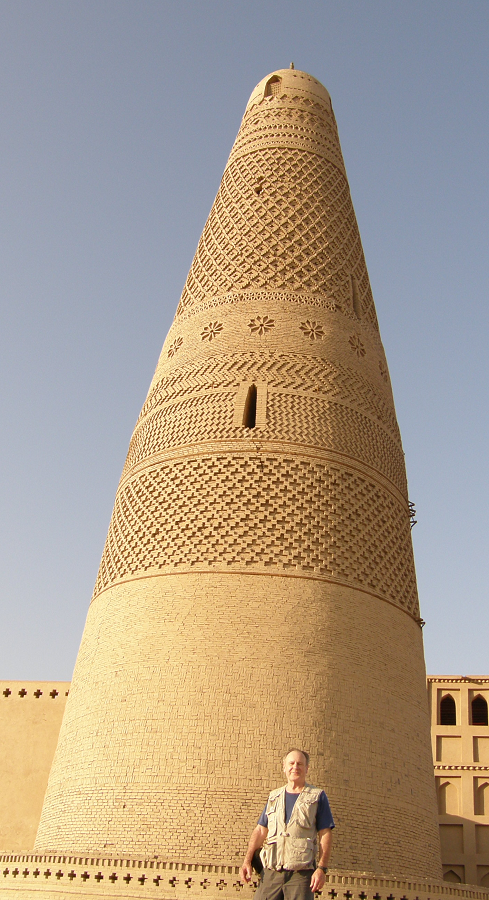 The Turfan Oasis in East Turkestan is far older than the Silk Road. Sitting in the Turfan Depression, second lowest on earth at over 500 feet below sea level) with a climate perfect for agriculture (like grapes for wine!), it was first settled by the Caucasian Tocharians some 4,000 years ago.
The Turfan Oasis in East Turkestan is far older than the Silk Road. Sitting in the Turfan Depression, second lowest on earth at over 500 feet below sea level) with a climate perfect for agriculture (like grapes for wine!), it was first settled by the Caucasian Tocharians some 4,000 years ago.
Over time it was absorbed into various empires ruling the Tarim Basin encircling the empty Takla Makan desert – proto-Mongols, the Tang Dynasty, the expanded Tibetan Empire at its height in the700s AD, Buddhist Uyghurs, and Genghiz’s Mongols. By the 1400s, the people of Turfan were mostly Buddhist or Nestorian Christian. By the end of the 15th century, they were ruled by the Moslem Moghuls who converted them to Islam.
Turfan was a key trading oasis on the Northern Silk Road which Marco Polo’s father and uncle, Niccolo and Maffeo traversed in 1266 to meet Mongol Emperor Kublai Khan. (Marco’s route with them in 1271 took the less-traveled Southern Silk Road underneath or south of the Takla Makan). I traversed both Silk Roads in 2008. Here I am at the Emin Minaret in Turfan. It’s a fabulous place to explore. Maybe some day again? (Glimpses of Our Breathtaking World #239 photo ©Jack Wheeler)
HALF-FULL REPORT 11/24/23
 If you’re paying no attention to the man above who made headlines around the world this week, I understand. If Fatima Florez was standing next to a fire-red Ferrari SF90, you’d never notice the car.
If you’re paying no attention to the man above who made headlines around the world this week, I understand. If Fatima Florez was standing next to a fire-red Ferrari SF90, you’d never notice the car.
Who is she? Argentina’s next Eva Peron. Javier Milei’s lioness. Before she became that this week, she was famous for her celebrity impersonations – like her of Michael Jackson. Now she’ll be idolized as Argentina’s First Lady – as will Javier if he succeeds in rescuing their country from its seemingly incurable sickness of socialism.
So… Welcome to the Thanksgiving Weekend HFR. Hope you enjoyed my The Lesson of Thanksgiving ereyesterday (11/22). And a sumptuous feast with family and friends yesterday. Let’s have fun now.
After all – how Schadenfreudelicious is it that we can celebrate while woketards can’t be thankful for the USA? Here we go!
THE EIFFEL AT NIGHT
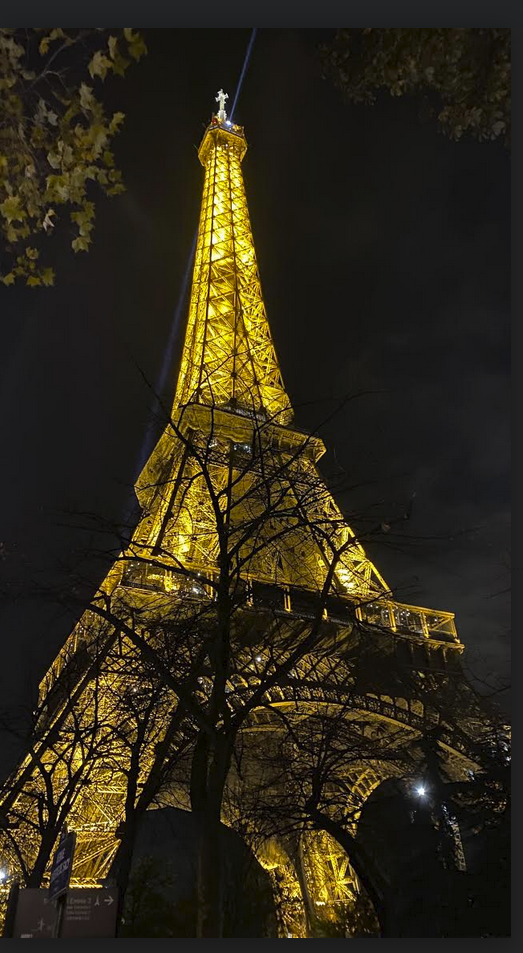 The Eiffel Tower is especially impressive at night. Taking the elevators to the first, second, and finally the third platform on top with the girders lit up against the black of night makes you gape at the herculean engineering achievement of Gustav Eiffel. It’s overwhelming that it took only 26 months to build – from the start on January 28, 1887 to the celebration of its completion on March 31, 1889.
The Eiffel Tower is especially impressive at night. Taking the elevators to the first, second, and finally the third platform on top with the girders lit up against the black of night makes you gape at the herculean engineering achievement of Gustav Eiffel. It’s overwhelming that it took only 26 months to build – from the start on January 28, 1887 to the celebration of its completion on March 31, 1889.
The Eiffel was built for the 1889 World’s Fair in Paris, in honor of the 100th anniversary of the 1789 French Revolution, and of the century of scientific progress and the Industrial Revolution since. It may seem bizarre that it was bitterly opposed by hundreds of Paris’ artistic and intellectual elite, who publicly condemned it as “a giddy, ridiculous tower dominating Paris like a gigantic black smokestack… stretching like a blot of ink the hateful shadow of the hateful column of bolted sheet metal.”
Too bad for them, for The Eiffel was quickly embraced by Parisians as a beloved symbol of their city, while it has gone on to be one of the world’s most epically famous monuments.
Rebel and were here in Paris with our son Brandon on Thanksgiving last year. I took this picture on that night. Should you ever be in Paris, be sure to visit the Eiffel – all the way to the top! – at night. The experience is simply glorious. (Glimpses of Our Breathtaking World #240 photo ©Jack Wheeler)
THE MONTE PALACE GARDENS OF MADEIRA
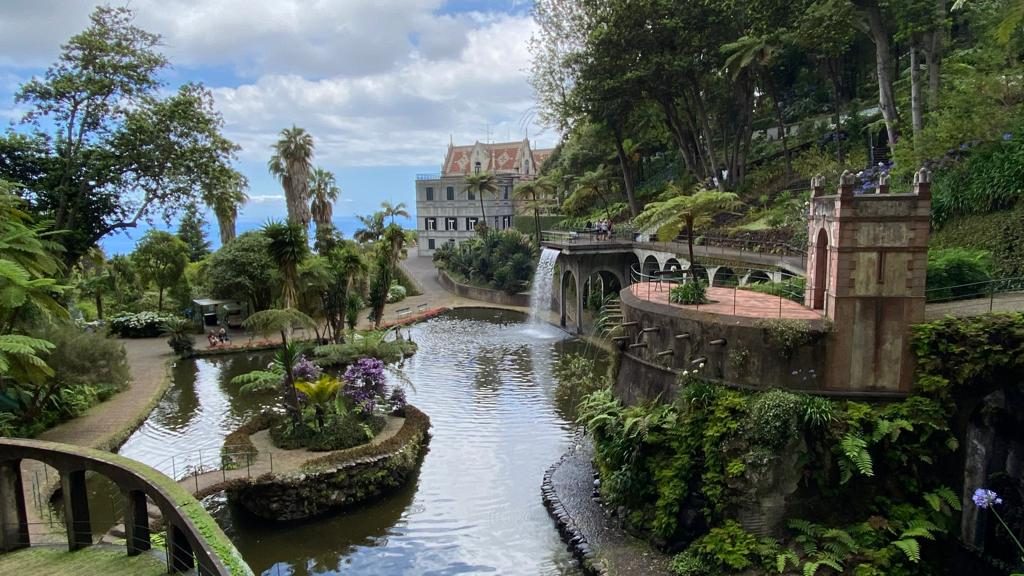 The island of Madeira in the Atlantic some 320 miles west of Morocco was first discovered, uninhabited, by Portuguese explorers in 1418. It has been a part of Portugal ever since. In the 1600s it became renowned for its Madeira wine, with English wine makers settling there and exporting it to England and the American colonies. The English consul Charles Murray built a beautiful estate, "Quinta do Prazer", Pleasure Estate, high above the capital of Funchal, which by the late 1800s was converted into the Monte Palace hotel.
The island of Madeira in the Atlantic some 320 miles west of Morocco was first discovered, uninhabited, by Portuguese explorers in 1418. It has been a part of Portugal ever since. In the 1600s it became renowned for its Madeira wine, with English wine makers settling there and exporting it to England and the American colonies. The English consul Charles Murray built a beautiful estate, "Quinta do Prazer", Pleasure Estate, high above the capital of Funchal, which by the late 1800s was converted into the Monte Palace hotel.
100 years later, Portuguese entrepreneurs developed the property into one of the most spectacular tropical gardens in the world, with lakes, waterfalls, and exotic tropical plants turning it into a fantasy wonderland. You can spend hours wandering around relaxing and luxuriating in this peaceful paradise. Which is just what we do whenever we are here. We’ll be here again early next summer. You should plan on being with us. (Glimpses of Our Breathtaking World #243 photo ©Jack Wheeler)
THE LESSON OF THANKSGIVING
[This Thanksgiving Archive was originally published on November 22, 2018. It is my hope that you might consider reading it aloud to those with whom you are celebrating Thanksgiving this year.]
TTP, November 22, 2018
Today, Thursday November 22, is Thanksgiving in America. A celebration of a bountiful Autumn harvest is an ancient tradition in many cultures.
The Romans celebrated Ieiunium Cereris, dedicated to Ceres, the goddess of agriculture. The Chinese have been celebrating Zhōngqiū Jié (Mid-Autumn Festival) for millennia. In Japan it’s Jugoya. For the Hindus of India, it’s Sharad Purnima. The Celts of the British Isles celebrated Lughnasadh which is the Harvest Thanksgiving in England and Canada today.
The origin of Thanksgiving in America is traditionally that of the Mayflower Pilgrims at Plymouth Rock. Yet the Kindergarten school plays all over the country this week, with five year-olds portraying the noble Indian, Squanto, teaching the helpless Pilgrims how to feed themselves, is not how it happened.
So here’s the real history of America’s First Thanksgiving, the extraordinary lesson to be learned from it, followed by a very personal lesson I have learned this year.
LUANGWA LAGOON SUNSET
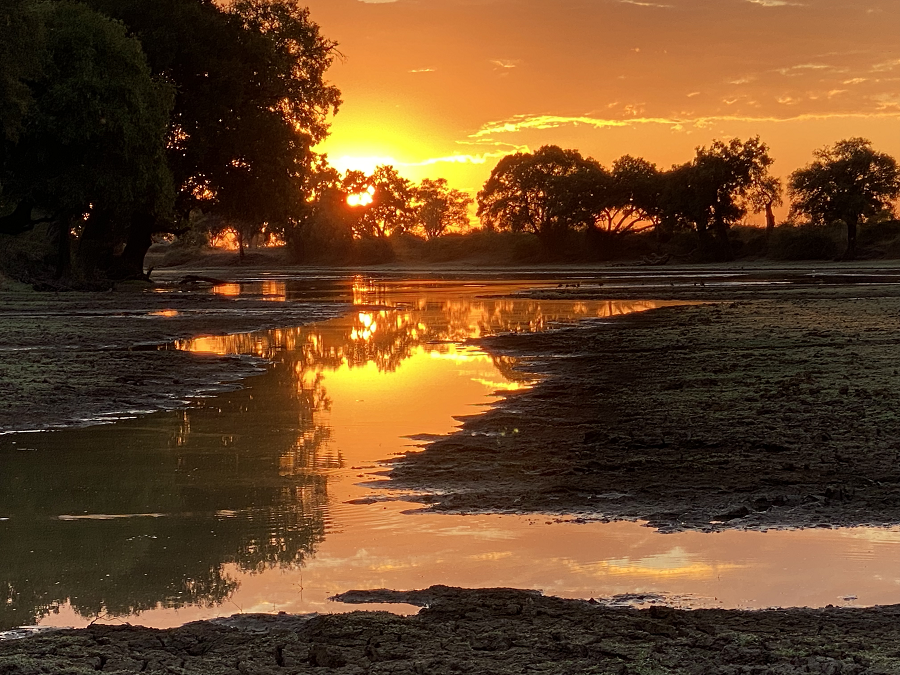 It’s hard to find a better example of the glory of nature than here – a lagoon off the Luangwa River in Africa’s Zambia. It’s also hard to believe I took this picture just a few days ago – and now I’m back home, and Africa so far away.
It’s hard to find a better example of the glory of nature than here – a lagoon off the Luangwa River in Africa’s Zambia. It’s also hard to believe I took this picture just a few days ago – and now I’m back home, and Africa so far away.
It was so fulfilling, so rewarding for me, over the past weeks, to provide a life-memorable experience of real Africa to eight TTPers – they’ll never forget it ever. I plan to be here again soon – perhaps you’ll be with me. There’s a primordial magic in Africa that grips your soul like nowhere else. The wisdom of those most familiar with the world is: “If you can visit only two continents in your life, go to Africa – twice.” (Glimpses of Our Breathtaking World #145 Photo ©Jack Wheeler)

